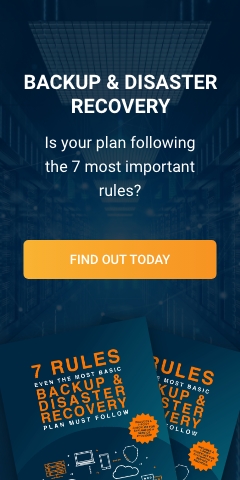Ensuring a human touch in tech support, especially within the fast-paced world of technology, is crucial. Managed Service Providers (MSPs) play a pivotal role in bridging this gap by offering not just technical expertise but also a personalized touch that caters to the needs of the C-Suite.
5 Ways MSPs Help C-Suite with the Human Touch in Tech Support
5 Ways a Co-Managed Partnership with an MSP Helps IT Directors with Scaling IT

In today's fast-paced digital landscape, businesses are continuously evolving and expanding. This expansion often demands a robust and scalable IT infrastructure solutions and services to support growth while maintaining operational efficiency. For IT Directors navigating this terrain, collaboration with a Managed Services Provider (MSP) in a co-managed partnership has emerged as a strategic approach to efficiently scale IT operations.
Complete Technology Services Adds to Katie Dyer and Donny Reyes to Leadership Team
[KANSAS CITY, MO, February 15, 2024] – Complete Technology Services (CTS) has added two members to their leadership team with the addition of Donny Reyes as the company's Chief Operating Officer (COO), and Katie Dyer as Vice President of Sales.
"I am excited about the extremely talented people we have been able to add to our leadership team," said Bret Knighton, President of Complete Technology Services.
Complete Technology Services Recognized on CRN’s 2024 MSP 500 List

[KANSAS CITY, MO, February 12, 2024] – Complete Technology Services (CTS) announced today that CRN®, a brand of The Channel Company®, has named Complete Technology Services to its Managed Service Provider (MSP) 500 List in the Pioneer 250 Category for 2024.
The MSP 500 list compiled by CRN serves as a comprehensive guide to identifying and recognizing the top Managed Service Providers (MSPs) in North America.
5 Ways MSPs Help Implement Budget-Friendly IT Strategies
How Co-Managed MSPs Elevate IT Management for IT Directors

In the ever-evolving landscape of technology, businesses face the challenge of keeping pace with rapid advancements while ensuring their IT infrastructure remains secure, efficient, and scalable. For IT directors, this responsibility often means juggling multiple tasks, from overseeing daily operations to strategizing for long-term growth.
Safeguarding Healthcare: How MSPs Shield Hospitals Against Ransomware Threats

In the digital age, healthcare systems have embraced technology to streamline operations, enhance patient care, and store invaluable medical data. However, with technological advancements comes the looming threat of cyberattacks, especially ransomware attacks, which can cripple hospitals and jeopardize patient data.
7 Ways MSPs Revolutionize Help Desk Support To Unlock C-Suite Efficiency

In today's fast-paced business landscape, the C-suite is constantly navigating challenges related to technology, efficiency, and productivity. As businesses increasingly rely on technology to drive operations, the role of Managed Service Providers (MSPs) has become crucial in ensuring seamless functioning, particularly when it comes to help desk support services.
Embracing the Cloud: MSPs and IT Managers’ Journey to a Seamless Migration

The rapid growth of managed cloud computing has revolutionized the way businesses operate. Embracing the cloud offers numerous benefits, including cost-efficiency, scalability, enhanced collaboration, and improved data security. Managed Service Providers (MSPs) and IT Managers play a pivotal role in helping organizations transition to cloud data servers seamlessly.




